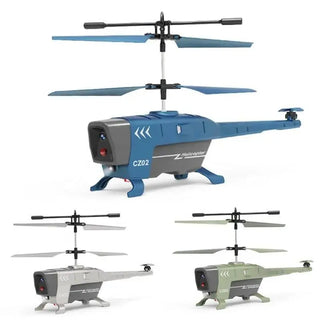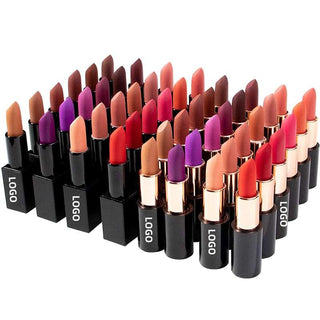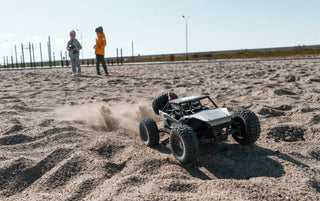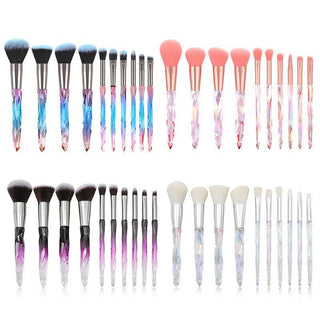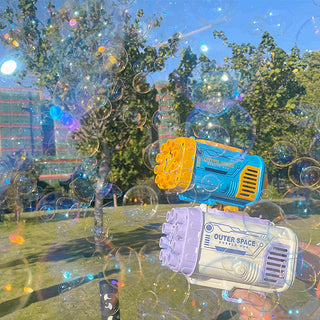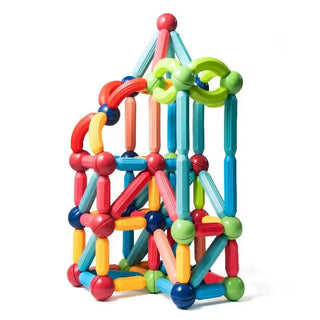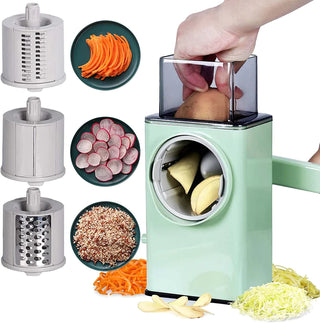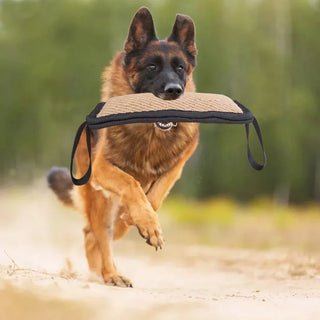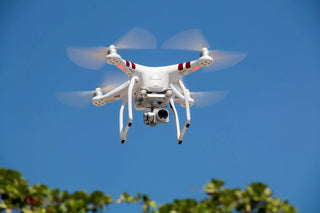Farming's getting a tech makeover, and drones are leading the charge. From keeping an eye on crops to cutting down on waste, these flying gadgets are changing how we think about agriculture. They're not just toys in the sky; they're tools that can help farmers do their jobs better and smarter. Whether it's snapping pictures from above or helping with planting, drones are making a big splash in the farming world. Let's dive into how they're shaking things up and what the future might hold for farming and drones.
Key Takeaways
- Drones are becoming essential in modern farming, helping with everything from monitoring crops to managing resources.
- Innovative drone tech is making it easier for farmers to collect data and make informed decisions on the go.
- Using drones can save farmers money and increase crop yields, making agriculture more profitable.
- There are challenges, like regulations and privacy concerns, but solutions are being developed to address them.
- The future of farming looks bright with drones, promising new ways to integrate with other smart technologies.
The Integration of Drones in Modern Farming
How Drones Enhance Crop Monitoring
Drones have become a game-changer in agriculture, especially when it comes to monitoring crops. They can fly over vast fields, providing farmers with a bird's-eye view of their crops. This aerial perspective is invaluable for spotting issues like pest infestations or diseases early on, which can save a lot of time and money. Farmers can now catch problems before they become serious threats.
- Drones can cover large areas quickly, which is crucial during peak growing seasons.
- They provide high-resolution images that help in identifying crop health issues.
- Real-time data from drones allows for timely interventions.
Precision Agriculture with Drone Technology
Precision agriculture is all about using technology to make farming more efficient. Drones play a big role here by helping farmers apply fertilizers and pesticides more accurately. This means using only what's needed, where it's needed, which is great for the environment and the farmer's wallet.
- Drones equipped with multispectral sensors can analyze crop health.
- They help in creating detailed maps for variable rate applications.
- Precision spraying reduces chemical use and increases yield.
Reducing Environmental Impact Through Drones
Using drones in farming isn't just about making life easier for farmers; it's also about being kinder to the planet. By optimizing the use of resources like water and chemicals, drones help reduce the environmental footprint of agriculture.
- Drones minimize the need for heavy machinery, lowering carbon emissions.
- They help in efficient water management, preventing wastage.
- Reduced chemical usage leads to healthier soil and ecosystems.
Integrating drones into farming practices is not just a technological shift but a step towards sustainable agriculture. As we embrace these flying helpers, we pave the way for a future where farming is both productive and environmentally responsible.
Innovative Drone Technologies Transforming Agriculture

Advanced Imaging and Sensor Capabilities
Drones are getting smarter with advanced imaging and sensor technologies. They can now capture detailed pictures and data about crops. This means farmers can see what's going on in their fields without stepping foot outside. These drones use sensors to check things like soil health, plant diseases, and even water levels. It's like having a health check-up for your plants right from the sky!
Autonomous Drone Operations in Farming
Imagine a drone flying by itself over a farm, doing all the work without a human controlling it. That's what autonomous drones can do. They can be programmed to follow specific paths, spray crops, and even plant seeds. This automation saves time and reduces the need for manual labor, allowing farmers to focus on other important tasks.
Real-Time Data Collection and Analysis
Drones can collect real-time data, which means farmers get the information they need instantly. This data can be about anything from weather conditions to crop health. With this immediate feedback, farmers can make quick decisions to improve their yields. It's like having a personal assistant that tells you exactly what's happening on your farm at any moment.
The future of farming is looking bright with drones leading the charge. They bring a level of precision and efficiency that was unimaginable just a few years ago. Farmers can now manage their fields with a level of detail and care that ensures healthier crops and better yields.
- Drones can help spot issues with crops early on.
- They reduce the need for chemicals by targeting only affected areas.
- Farmers can save money on labor and resources.
Incorporating these technologies into agriculture not only boosts productivity but also promotes sustainable practices. By using drones, farmers are able to make informed decisions that support a greener and more efficient way of farming. For instance, using tools like the Sustainable Dicing Machine in food preparation complements the eco-friendly approach that drones bring to agriculture.
Economic Benefits of Using Drones in Agriculture
Cost-Effective Solutions for Farmers
Drones have become a game-changer for farmers looking to cut costs and boost efficiency. By replacing traditional methods with drone technology, farmers can save on labor and equipment expenses. Drones can cover large areas quickly, reducing the time and manpower needed for tasks like crop monitoring and spraying. Plus, they offer precision that minimizes waste, ensuring resources like water, seeds, and fertilizers are used more effectively.
Increasing Crop Yields with Drone Assistance
One of the standout benefits of using drones in agriculture is their impact on crop yields. Drones equipped with advanced sensors can monitor crop health in real-time, allowing farmers to spot issues early and take corrective action. This proactive approach helps in preventing crop loss and maximizing output. Additionally, drones can optimize planting patterns and irrigation schedules, ensuring crops get the right amount of water and nutrients.
Optimizing Resource Management
Efficient resource management is critical in farming, and drones play a significant role in this area. With their ability to provide detailed aerial views, drones help farmers make informed decisions about resource allocation. For instance, they can identify areas of a field that require more attention, such as additional watering or pest control. This targeted approach not only conserves resources but also enhances crop quality and yield.
As technology continues to advance, the integration of drones in agriculture promises to further streamline operations and improve sustainability. Farmers who embrace this technology are likely to see significant economic benefits, paving the way for a more efficient and productive agricultural sector.
For those interested in a compact yet powerful option, the 6-Channel 6-Axis Pocket Drone offers a thrilling flying experience with advanced stabilization and quick recharge capabilities, making it a great choice for both beginners and seasoned pilots.
Challenges and Solutions in Implementing Drones on Farms

Overcoming Regulatory Hurdles
Getting drones off the ground in the farming world isn't as easy as it sounds. There are rules and laws that can make things tricky. Farmers need to know about airspace restrictions, flight permissions, and other legal stuff. It's like trying to understand a new language. One way to tackle this is by working with legal experts who know the ropes. They can help farmers navigate the red tape without getting tangled up.
Addressing Privacy and Security Concerns
Drones can be a bit nosy, and that's a problem. Nobody wants their farm activities broadcasted to the world. Farmers need to make sure their drones don't invade people's privacy. Plus, there's the worry about data security. What if someone hacks into the drone's system? To deal with these issues, farmers can:
- Use encryption to protect data collected by drones.
- Set clear guidelines on where and when drones can fly.
- Regularly update drone software to patch security vulnerabilities.
Training and Skill Development for Farmers
Operating a drone isn't as simple as flying a kite. It takes skills and practice. Farmers need to learn how to use this new tech effectively. Training programs can make a big difference. Here's what they might include:
- Basic drone operation and safety measures.
- Understanding drone software and data analysis.
- Hands-on practice with different types of drones like the Adventure Ready Dual Camera Folding Drone, which is great for beginners.
Adopting drones in agriculture is like learning to ride a bike. It takes time, patience, and maybe a few bumps along the way, but the benefits are worth it in the end.
Future Trends in Farming and Drone Technology
Emerging Innovations in Drone Design
Drones are becoming more advanced and specialized for agriculture. Lightweight materials and improved battery life are allowing drones to fly longer and cover more ground. Innovations like the Dual 4K Camera Foldable Drone are making it easier for farmers to capture high-quality images and data. These drones are compact and portable, which is great for farmers who need to move quickly between fields.
Integration with Other Smart Farming Technologies
Drones are not just flying solo anymore; they are part of a larger ecosystem of smart farming tools. They work alongside GPS-guided tractors, automated irrigation systems, and AI-driven analytics platforms. This integration helps farmers manage their resources better and make informed decisions. Imagine drones flying over fields, collecting data, and instantly sharing it with other smart devices on the farm.
Potential for Global Agricultural Transformation
The use of drones in farming is not just a local trend; it has the potential to change agriculture worldwide. In developing countries, where traditional farming methods are still prevalent, drones can provide a much-needed technological boost. They can help increase crop yields, reduce waste, and improve food security. As drone technology becomes more accessible, we could see a global shift towards more efficient and sustainable farming practices.
With drones becoming more integral to farming, the future looks promising. They are not just about flying high but are also about bringing us closer to a more sustainable and efficient way of growing food.
Case Studies: Successful Drone Applications in Agriculture

Pioneering Farms Leading the Way
In recent years, farms across the globe have started integrating drones into their daily operations. These pioneering farms are setting the standard for how drones can be used effectively in agriculture. For instance, a vineyard in California uses drones to monitor grape health, ensuring optimal growth conditions. Similarly, a rice farm in Japan employs drones for precise water management, resulting in improved crop yields.
- A dairy farm in Wisconsin utilizes drones to track cattle movements, improving herd management.
- An Australian wheat farm uses drones to assess soil conditions, allowing for better crop planning.
- In Brazil, a soybean farm leverages drone technology for pest control, reducing the need for chemical pesticides.
Lessons Learned from Early Adopters
Early adopters of drone technology in agriculture have faced challenges but also gained valuable insights. Among the lessons learned is the importance of selecting the right drone model for specific farm needs. Additionally, training staff to operate drones effectively can significantly enhance their benefits.
- Choose drones that fit your farm's specific requirements, whether it's for crop monitoring or soil analysis.
- Invest in training programs for farm workers to maximize the potential of drone technology.
- Regularly update the drone software to keep up with technological advancements.
Embracing drone technology requires a willingness to adapt and learn. Early adopters have shown that the rewards can be substantial, from increased efficiency to reduced environmental impact.
Impact on Small-Scale and Large-Scale Farms
Drones are making waves in both small and large farming operations. For small-scale farms, drones offer a cost-effective way to monitor crops and manage resources. Large-scale farms, on the other hand, benefit from drones' ability to cover vast areas quickly and efficiently.
| Farm Size | Drone Application | Benefits |
|---|---|---|
| Small-Scale | Crop monitoring and resource management | Cost-effective, efficient |
| Large-Scale | Wide-area coverage and data collection | Fast, comprehensive insights |
Both small and large farms are discovering that drones can significantly enhance their operations, leading to better yields and more sustainable practices. As technology advances, the potential for drones in agriculture continues to grow, offering exciting possibilities for the future.
Environmental and Ethical Considerations of Drone Use in Agriculture

Sustainable Practices with Drone Technology
Drones are shaking things up in farming by offering more sustainable ways to work the land. They help farmers keep a closer eye on crops without trampling the ground, which means less soil compaction. This is a big deal because compacted soil can lead to poor plant growth. Plus, drones can pinpoint where pests or diseases are starting, so farmers only use pesticides where they really need them. This targeted approach cuts down on chemical use, which is better for the environment.
Ethical Implications of Drone Surveillance
With drones buzzing around, there are some ethical questions popping up. Privacy is a biggie. Farmers and nearby residents might feel uneasy with drones flying overhead, collecting data. It's crucial to have clear rules about what drones can and can't do. Another thing to think about is how this tech could impact jobs. If drones take over tasks that people used to do, what happens to those jobs? This is something that needs careful thought.
Balancing Technology and Traditional Farming Methods
Bringing drones into farming doesn't mean tossing out the old ways. It's about finding a balance. Traditional methods have been around for a reason—they work. But drones can make some tasks quicker and more efficient. The trick is to use drones where they make sense and keep doing things the old way where it works best. This way, farmers can get the benefits of new tech without losing the personal touch that comes with hands-on farming.
As drones become more common in agriculture, finding the right mix of tech and tradition is key. It's not about replacing farmers, but giving them new tools to do their job better.
Incorporating these new technologies, like a foldable drone with dual 4K cameras, can offer exciting possibilities for modern farming, blending innovation with tried-and-true practices.
Drones are changing farming, but we must think about their impact on the environment and ethics. Using drones can help farmers grow crops better, but we need to be careful about how they affect nature and the people around us. It's important to use these tools wisely to protect our planet and support fair practices. If you want to learn more about how drones can be used responsibly in agriculture, visit our website for more information!
Wrapping It Up
So, there you have it. Farming and drones are teaming up, and it's kind of a big deal. Who would've thought flying gadgets would be the next big thing in agriculture? But here we are. Farmers are getting a helping hand from the sky, and it's changing the game. Sure, there are bumps along the way, like figuring out how to make it all work smoothly. But the potential is huge. Imagine crops growing better, less waste, and maybe even more food for everyone. It's not just about cool tech; it's about making farming smarter and more efficient. As we look ahead, it's exciting to think about where this tech will take us. The future of farming? It's looking pretty bright, thanks to these high-flying helpers.
Frequently Asked Questions
How do drones help in watching over crops?
Drones can fly over fields and take pictures or videos. This helps farmers see how their crops are doing without walking through the fields.
What is precision farming with drones?
Precision farming means using drones to give plants exactly what they need, like water or fertilizer. This helps plants grow better and saves resources.
Can drones help the environment?
Yes, drones can help the environment by using less fuel than tractors and by spraying only the areas that need it, which reduces waste.
Are drones expensive for farmers?
While drones can cost a lot at first, they can save money in the long run by helping farmers use fewer resources and increase their crop yields.
What are the rules for using drones on farms?
Farmers have to follow rules about flying drones, like not flying too high and staying away from airports. These rules help keep everyone safe.
Do farmers need special training to use drones?
Yes, farmers need to learn how to fly drones and use the data they collect. This training helps them make the most out of their drones.

